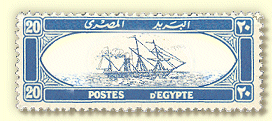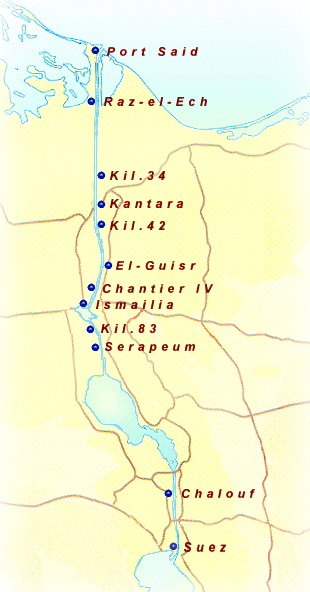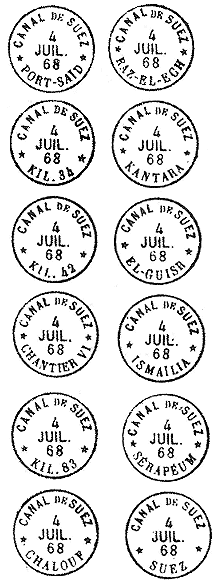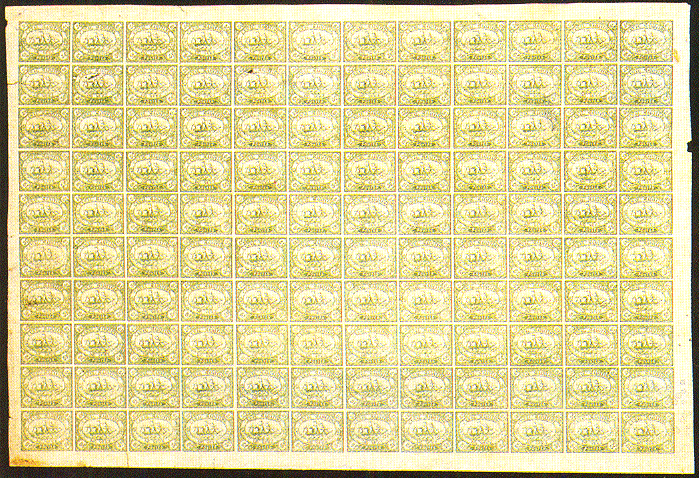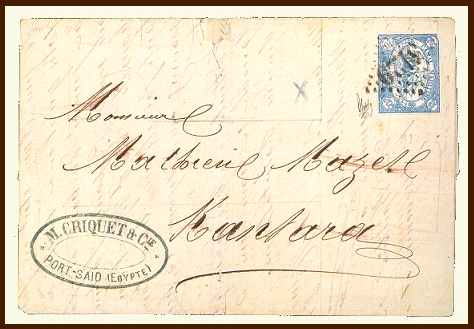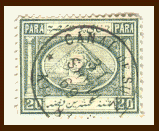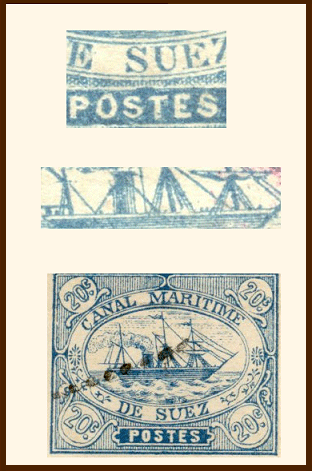In 1859 the Compagnie Universelle du Canal Maritime de Suez set up its own postal system to convey administrative mail between its work sites and its offices
in Alexandria, Port Said, Ismailia and Suez. Later, in 1860, it formed an agreement with the Posta Europea for the conveyance of its mail to the nearest
Posta Europea office: Damietta, Suez or Zagazig.
This arrangement ran until 1865, when the Posta Europea was taken over by the Egyptian Government, after which the company resumed operation of its own postal
system. Carriage of the mail was free for personal and business mail of company employees and other residents of the Canal area. In November 1867, to cover the
cost of this service, it was decided to introduce a charge for the carriage of private mail, to take effect from July 1, 1868.
As a result the company headquarters in Paris placed an order for postage stamps in denominations of 1, 5, 20 and 40 centimes with the Paris firm of Chézaud
Ainé et Tavernier. These were printed by lithography, with the printing surface of the 20 centimes stone built up by means of 120 individual lithographic
transfers taken from an original single-image stone. The other three printing stones of 120 impressions were made up of 30 transfers taken from an intermediate
stone of four images.
The stamps were sent Egypt in June 1868, but did not arrive in Ismailia until early July, perhaps the 8th or 9th, just over a week too late for the introduction
of the postage fees. The company had ordered its own datestamps, but these were also late so the stamps were cancelled either by pen or by several types of
obliterators held at Port Said by the French Post Office. At Port Said these include the "grand chiffre" lozenge of dots with the number "5129" and the
double-ringed "PORT-SAID" datestamp; at Ismailia by a rectangle of 48 dots in blue; and at Suez by a 25mm circle of large lozenges also in blue.
Members of the public objected, however, to this "extra tax" going to the company, and the Egyptian postal authorities were concerned about the infringement
of the state postal monopoly and their own loss of revenue. They quickly tried to close down the service, which resulted in Giacomo Muzzi, the Postmaster General,
agreeing to take control on August 16, 1868.
Most of the company's post office facilities and postal equipment were transferred to the Egyptian Government, which immediately opened Egyptian civil post
offices on the sites of the former company offices. As a result the Canal Company stamps were in use for a short period of less than 40 days, making genuinely
used examples extremely rare with only a few known covers.
|
